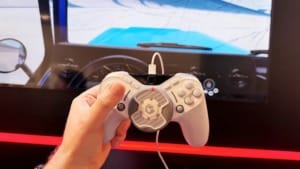Elon Musk’s Neuralink to trial robotic arm control through brain implants
Neuralink begins trials on brain implants that let paralysed users control robotic arms with thoughts, aiming to restore physical independence.

Elon Musk’s Neuralink has announced an exciting milestone in medical technology—a trial to see if its brain implant can help people with paralysis control a robotic arm using only their thoughts.
Table Of Content
We’re excited to announce the approval and launch of a new feasibility trial to extend BCI control using the N1 Implant to an investigational assistive robotic arm.
— Neuralink (@neuralink) November 25, 2024
This is an important first step towards restoring not only digital freedom, but also physical freedom. More info…
The feasibility study trial marks a crucial step in the company’s effort to connect the human brain with advanced robotics. Neuralink shared the news on November 25, stating, “We’re excited to announce the approval and launch of a new feasibility trial to extend brain-computer interface (BCI) control using the N1 Implant to an investigational assistive robotic arm.”
Paving the way for digital and physical freedom
Founded in 2016, Neuralink has been at the forefront of brain-computer interface (BCI) technology, which aims to bridge the gap between the human brain and external devices. The company sees this development as a move toward restoring digital control and physical independence for individuals with paralysis.
Earlier this year, Neuralink successfully implanted its BCI into its first human volunteer. The breakthrough was showcased in a video where the volunteer, quadriplegic Noland Arbaugh, used his thoughts to control a cursor and move chess pieces on a screen. Since then, Neuralink has expanded its trials, implanting the device into a second volunteer in August, with plans for eight additional trials in the coming months.
This new testing phase focuses on controlling an external device—a robotic arm. It could revolutionise how people with severe motor impairments navigate the world, offering a new level of autonomy.
How the technology works
The N1 Implant is at the heart of Neuralink’s innovation. Using a robot, ultra-fine and flexible threads are surgically implanted into the area of the brain that controls movement intention. Once positioned, the implant can record and wirelessly transmit brain signals to a companion app, which decodes the signals into movement commands.
The implant is designed to be invisible beneath the skin, offering users a discreet and practical solution. Neuralink emphasises the safety and precision of the surgical robot used in the procedure, which is critical in placing the threads without damaging surrounding brain tissue.
The current trial will evaluate the implant’s safety and measure how effectively the technology can help users interact with robotic devices.
A glimpse at the competition
While Neuralink is making headlines, it is not the only company exploring brain-computer interfaces. For instance, BrainGate has demonstrated technology that allows patients with paralysis to convert imagined handwriting into text, showing how BCIs can assist communication.
However, Neuralink’s focus on using BCIs for digital and physical freedom sets it apart. The company hopes that advancements in this field will transform the lives of individuals with severe disabilities, helping them regain control over their environment and achieve greater independence.
With this groundbreaking trial underway, Neuralink is pushing the boundaries of neuroscience and robotics, bringing us closer to a future where thoughts can control machines seamlessly.













